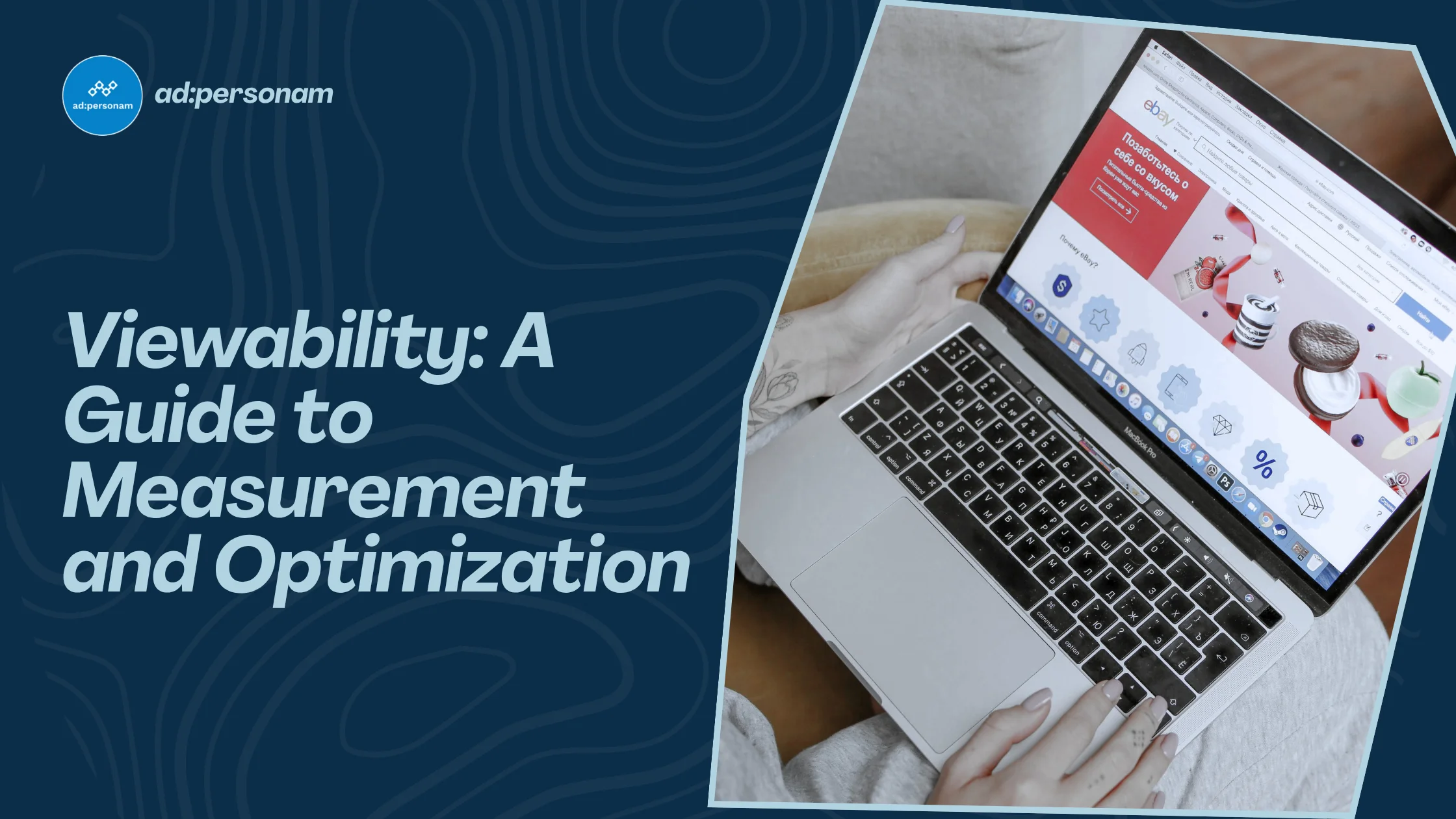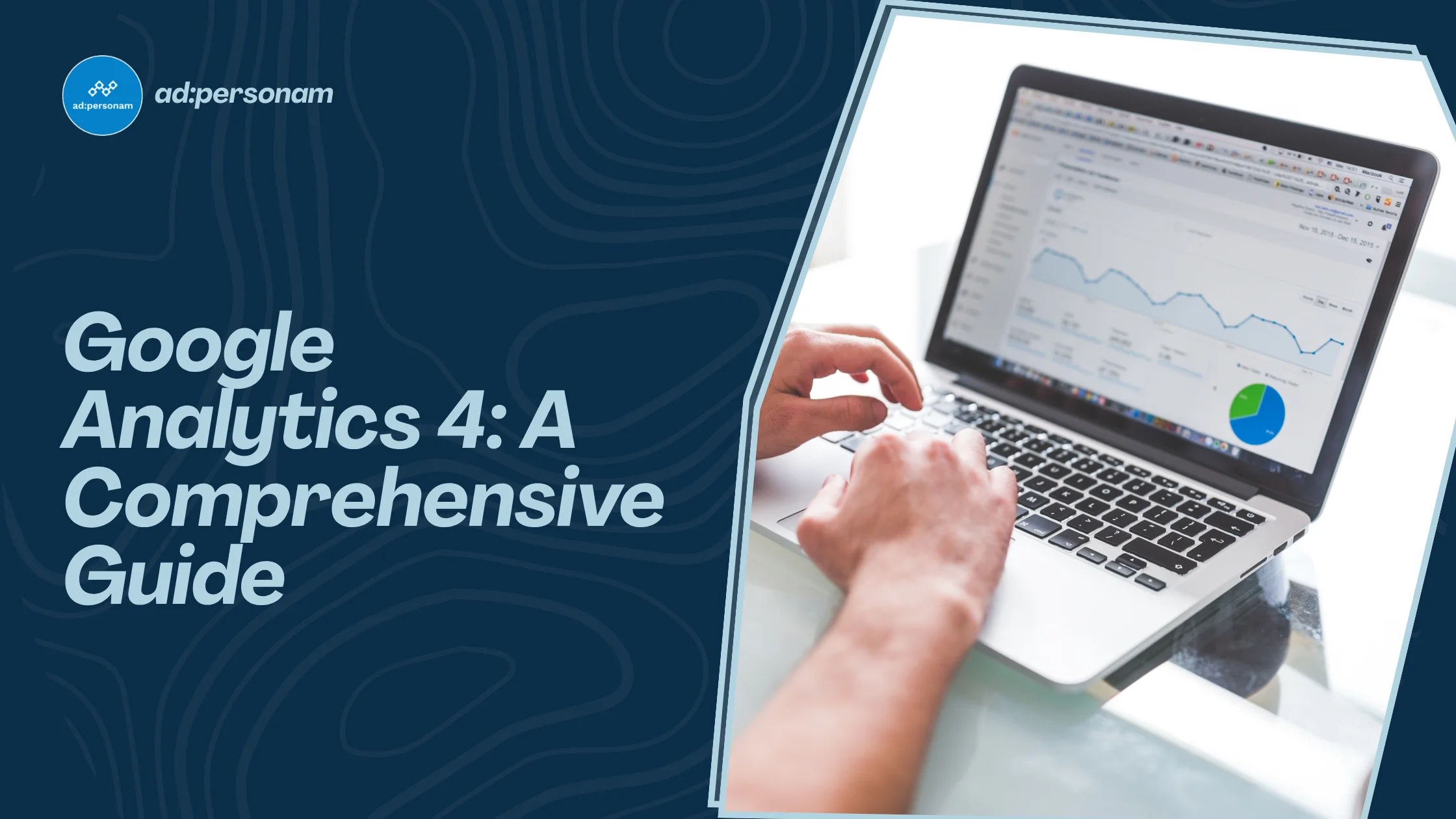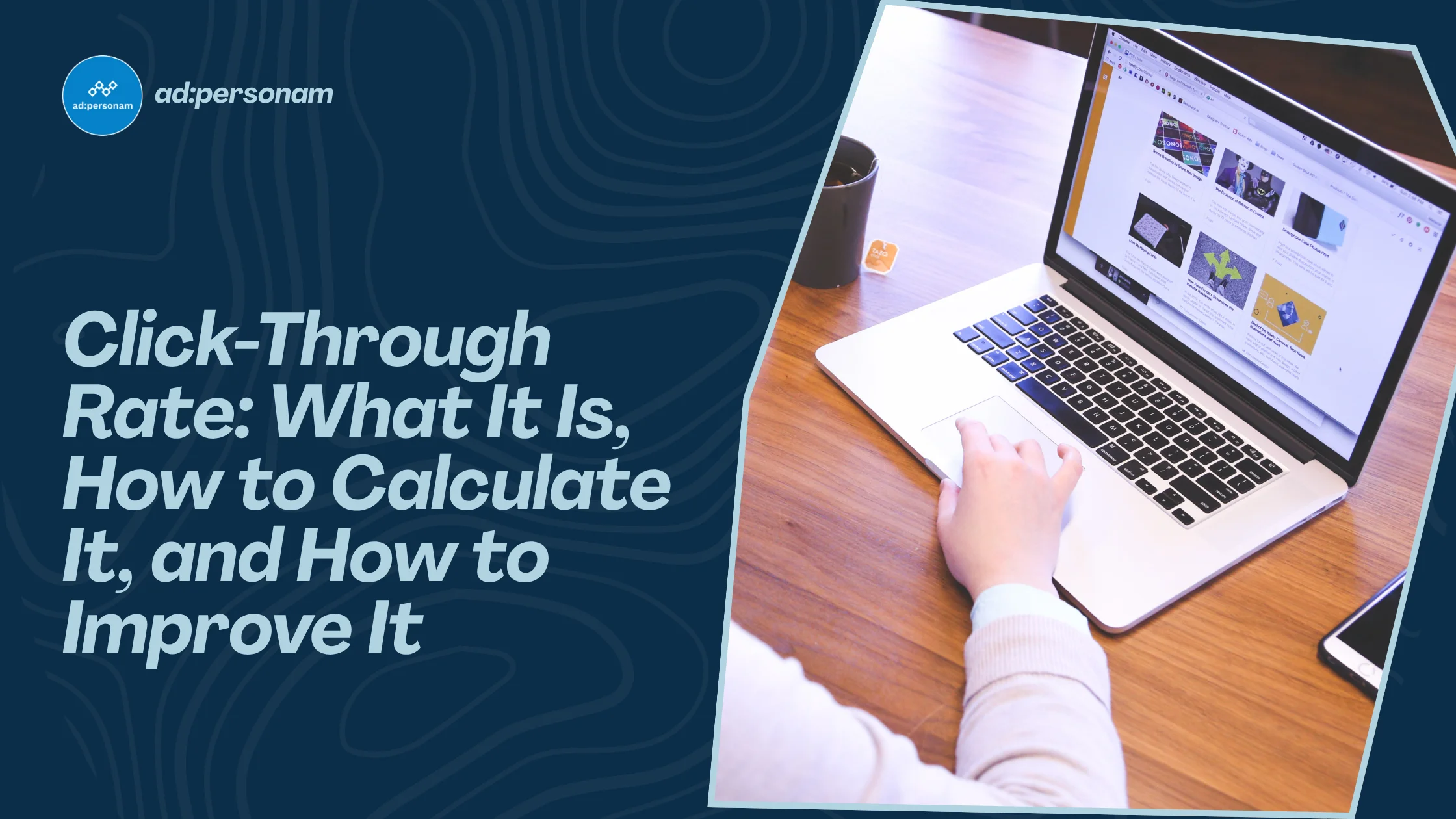Viewability: Complete Guide to Measurement, Optimization, and KPIs
Discover what viewability is, how to measure and optimize it in your digital ads, and which KPIs to track for maximum campaign effectiveness
Contents
- What is Viewability?
- Viewability: Formula and Key Metrics
- How to Measure Viewability
- Why Viewability Matters (Impact on Performance and Value)
- Indicative Benchmarks by Format and Device
- How to Optimize Viewability
- Advanced Creative Optimization and Dynamic Creative (DCO)
- Viewability in Video and Connected TV (Specific Characteristics)
- Tools and Vendors for Measuring Viewability
- Discrepancies Between Sources (Why Numbers Don't Match)
- Recommended KPIs, Dashboards, and Reporting
- A/B Testing and Experimentation Framework for Viewability
- Viewability and Programmatic: Integrating It Into Buying Strategy
- Common Problems and How to Solve Them
- Privacy, Technical Limitations, and Cookie Deprecation Impact
- Practical Examples and Mini Case Studies
- FAQ on Viewability
- Tips for Correctly Measuring Viewability

In digital advertising, budget optimization is critical for achieving your goals. This is where viewability becomes essential. Many marketers focus on impressions, reach, and clicks—but overlook visibility, which can directly impact campaign ROI. This guide covers what viewability means, how to measure it, and proven strategies to optimize it.
What is Viewability?
Viewability measures the portion of ad impressions that are actually "visible" to users, not just served by an ad server. To ensure your campaigns achieve proper visibility, follow industry standards like MRC and IAB. Some platforms or markets may use different standards.
Here are the main guidelines:
- Display formats: The typical standard requires at least 50% of the ad's pixels to be visible for at least 1 second.
- In-stream video formats: The common threshold is at least 50% of pixels visible for at least 2 seconds.
An ad impression can be "served" (the server delivered the ad) but not viewed. This happens when ads are below-the-fold, users don't scroll to the position, the ad is in an inactive tab, or it's blocked by ad blockers.
Viewability: Formula and Key Metrics
Understanding viewability requires knowing the formula, definitions, and key metrics:
- Viewability rate = (Viewable impressions / Measurable impressions) × 100
- Measurable impressions: Impressions for which it's possible to measure visibility
- Viewable impressions: Measurable impressions that meet the visibility threshold
- Viewable rate: Percentage of visible impressions
- Average viewable time: How long, on average, the ad remains visible
- vCPM (viewable CPM): Cost per thousand viewable impressions
- Viewable CTR: Click-through rate on viewable impressions
- Percentage of non-measurable impressions: Useful for understanding measurement gaps
How to Measure Viewability
There are several methods to measure viewability, determined by your objectives.
Here are the main approaches:
- Client-side approach (most common): JavaScript or SDKs that detect banner position in the viewport, page scrolling, visible dimensions, whether the ad is in an active tab, etc.
- Server-side approach: Based on server logs and ad server signals. This approach is important in environments that aren't standard browsers (e.g., Connected TV, video with server-side ad insertion – SSAI).
- Third-party verification vendors: Independent verification vendors that provide external tags or SDKs for unbiased measurements not influenced by ad server or publisher bias.
To make measurement useful, follow these best practices:
- Load measurement tags asynchronously to avoid blocking page rendering or asset loading
- Maintain tag/SDK versioning for tracking changes and rollbacks if necessary
- Test in staging environments before production rollout across various devices, browsers, and network conditions
Other Parameters Beyond Pure Viewability
Viewability in its technical sense isn't everything. Additional aspects complete the picture and often determine final exposure quality:
- Viewable time: How long the ad remains visible
- Visible area: Percentage of visible pixels
- Audibility (for video): Whether video starts with sound or is muted
- Completion rate/quartiles (video): Relationship between viewability and how much of the video is actually watched
- Interaction metrics: Hover, click-to-play, time spent over the creative, total exposure time
- Invalid Traffic (IVT) and bots: Non-human or fraudulent traffic inflating measurable impressions and distorting viewability data
Why Viewability Matters (Impact on Performance and Value)
Viewability helps optimize spending by ensuring excellent visibility. It improves exposure metrics quality and correlation with CTR/conversions—when ads are seen frequently, they're more likely to be clicked. By focusing on viewable impressions rather than all served impressions, you achieve lower CPMs while maintaining campaign effectiveness. Greater visibility also increases brand awareness and recall.
Indicative Benchmarks by Format and Device
While values vary by market, channel, and publisher type, format and device benchmarks help gauge viewability effectiveness. Compare these percentages with your campaign results.
Here are the main benchmarks:
- Standard display web (desktop): Viewability rate typically between 50-70%
- Mobile web display: Between 40-60%
- Mobile in-app: Between 60-80%
- In-stream video on desktop/mobile: Above 70-80%
- Connected TV (CTV) / OTT: Over 80-90%
How to Optimize Viewability
You can use several strategies to optimize viewability:
Inventory Strategy: Prioritize above-the-fold positions, pages with moderate scrolling, and in-app or CTV inventory when possible.
Creative Strategy: Focus on creative that sparks curiosity and surprise to capture user attention.
Platform Selection: Choose specific platforms for desired outcomes, like private marketplaces or publishers known for high viewability rates.
Technically, you can:
- Use asynchronous tags
- Reduce code/JavaScript that blocks rendering
- Minimize wrappers or components that slow measurement tag firing
Finally, set frequency caps to avoid overlaps and establish the most performant time windows.
Advanced Creative Optimization and Dynamic Creative (DCO)
With DCO (Dynamic Creative Optimization), you can adapt creatives based on format, device, and placement with higher viewability probability. For example, banner versions optimized for mobile vs. desktop with more "visible" layouts.
To make them more effective, test short vs. long versions, diversify CTAs, and modify layouts that aren't performing. Always prioritize assets that performed better in testing.
Viewability in Video and Connected TV (Specific Characteristics)
For video and connected TV ads, verifying viewability requires checking:
- For video players: VAST quartiles (25%, 50%, 75%, 100%), autoplay behavior, player size
- CTV/OTT: Use device logs, playback events, server-side data
Connected TVs also require reliable partners who read playback events ensuring the video is being viewed.
Tools and Vendors for Measuring Viewability
For viewability measurement, you can use various tools. Some are already available automatically, like ad server reports, and others require installation, such as measurement SDKs and third-party verification tags (e.g., DoubleVerify, IAS, Moat). On the publisher side, you can import internal logs and analytics capturing real-time exposure.
Tool selection depends on device coverage, data independence, sample size, and method transparency. Always measure across multiple tools to identify any discrepancies.
Discrepancies Between Sources (Why Numbers Don't Match)
Depending on the system used, you may encounter discrepancies for several reasons. Common causes include firing/tags occurring at different times, ad blockers, sampling differences, and how iframes or header bidding wrappers are handled. To prevent or reduce these, set up campaigns properly with the same time window, same impression set, same device/browser, and conduct A/B tests to verify optimization.
Recommended KPIs, Dashboards, and Reporting
Generally, to confirm viewability correctness, the main KPIs to monitor are:
- Viewable rate by channel/format/device
- Average viewable time
- vCPM
- Viewable CTR
- Percentage of non-measurable impressions
For reliable reports, segment by publisher, format, device, creative, placement, and campaign type. Remember to set alerts for threshold breaches or bugs.
We always recommend setting up alerting, for example a viewability drop >X% from baseline or an increase in non-measurable impressions beyond a certain threshold.
A/B Testing and Experimentation Framework for Viewability
A/B testing should be set up by first defining a hypothesis, duration, and KPIs. Then run various checks based on the test group. Only when you have sufficient data, evaluate campaign effectiveness and potential improvements.
Viewability and Programmatic: Integrating It Into Buying Strategy
Investing in viewability requires initial planning and constant monitoring. Use tools that allow real-time campaign optimization and always guarantee minimum viewability thresholds for paid impressions. For broader results, don't focus exclusively on viewability—diversify.
With ad:personam's DSP platform, you can integrate viewability into your programmatic digital campaigns.
Common Problems and How to Solve Them
- Impressions not counted or creatives not displayed due to slow loading, unmanaged lazy loading, or code errors
- Divergent measurements between vendors
- Quick debug steps: Verify proper tag implementation, test on real devices, temporarily disable wrappers/header bidding to check if they introduce latency, ensure creatives work properly in all contexts
Privacy, Technical Limitations, and Cookie Deprecation Impact
Privacy can impact viewability campaign data because tracking limitations may lower the actual number of views. The recommendation is to focus on first-party data, server-side measurement, and contextual targeting.
Practical Examples and Mini Case Studies
Here are 1-2 replicable examples (without sensitive numbers) showing how to intervene concretely:
-
Case 1
Context: E-commerce client with display banners on mobile web, low viewable rate (around 45-50%).
Problem: Most banners were positioned below-the-fold, slow loading, and many served through header bidding wrappers that delayed tag firing.
Intervention: Moved banners to above-the-fold positions + asynchronous tag implementation + image compression/loading optimization + responsive creative testing more readable on mobile.
Result/lessons: Viewable rate improved by approximately 20 percentage points; however, slight increase in bounce rate on some overly "dense" pages. Lessons: UX must be tested alongside viewability. -
Case 2
Context: In-stream video campaign on desktop/mobile, advertiser focused on awareness.
Problem: High viewability but low completion rate; users abandoned video around halfway.
Intervention: Reduced video duration, optimized player for quick start, better audio integration (don't start muted when possible) + shifted to CTV/OTT inventory for part of video.
Result/lessons: Increased completion percentage (quartiles) + longer view time, with brand recall benefits. But watch the balance between higher vCPM cost and expected results.
FAQ on Viewability
What Does Viewability Mean?
Viewability is a digital advertising metric that indicates whether an ad was actually visible on the user's screen for a minimum established time. The ad must appear in the visible portion of the screen. On platforms like ad:personam, viewability is essential for optimizing campaigns, ensuring budget is spent on truly visible impressions.
What's the Difference Between Visibility and Viewability?
Visibility describes the simple possibility that content is shown on the user's screen, without considering whether the user actually saw it. Viewability, instead, establishes more precise technical criteria: for example, at least 50% of the ad's pixels must remain visible for at least 1 second (for display) or 2 seconds (for video). With ad:personam, this distinction is crucial because it allows measuring actual programmatic campaign effectiveness and improving results in real-time.
How is Viewability Measured in Advertising?
Viewability is measured through standards defined by organizations like the IAB (Interactive Advertising Bureau) and Media Rating Council (MRC). Ad:personam integrates tools and AI algorithms that monitor these metrics, offering advertisers clear data to optimize their online advertising campaign performance.
Tips for Correctly Measuring Viewability
Here are 5 practical actions to start measuring viewability immediately:
- Measure: Activate viewability measurement on your campaigns, choose clear standards
- Triangulate data: Use multiple sources (ad server, third-party verification tools, publisher analytics)
- Test interventions: Experiment with creatives, placements, technologies (asynchronous tags, etc.)
- Negotiate viewability-oriented metrics: Define minimum thresholds, guarantees, vCPM in contracts
- Monitor continuously: Establish baselines, alerts on significant drops, periodic reviews
To measure viewability simply and automatically, try our DSP platform: ad:personam and discover all its features.
You might also like

Google Analytics 4: Complete Setup, GDPR Compliance & Migration Guide
Master GA4 with event-based tracking, GDPR compliance, and Universal Analytics migration. Optimize programmatic campaigns with data-driven insights.

Third-Party Cookies: Complete Guide for Digital Marketing
Learn what third-party cookies are, how they work, GDPR compliance requirements, and cookieless alternatives for digital marketing success.

Click Through Rate (CTR): What It Is, How to Calculate and Improve It
Discover what click through rate is, how it's calculated, and why it's crucial for your programmatic marketing campaigns